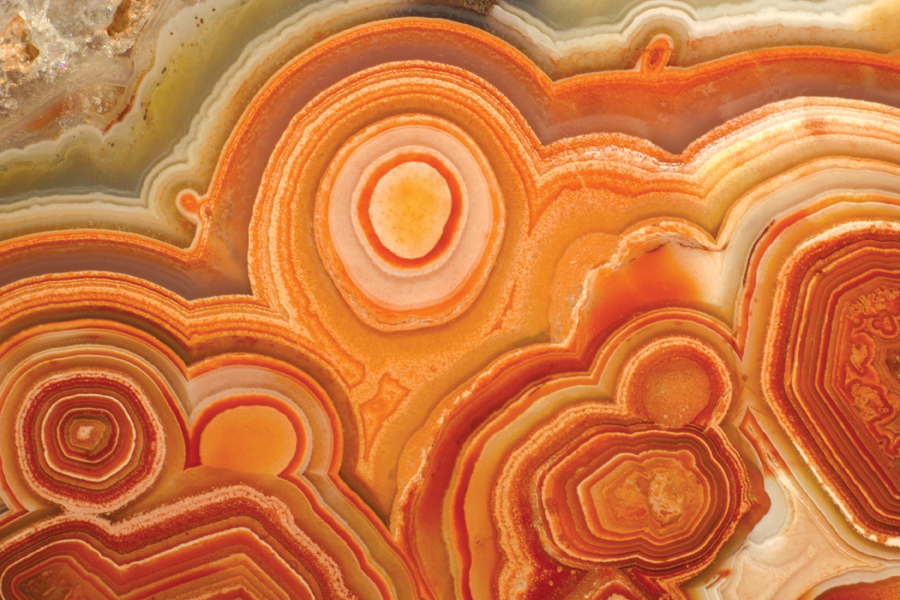Agate << AG iht >> is a banded form of chalcedony, a fine-grained, porous type of quartz. It commonly forms by precipitation in cavities of sedimentary and volcanic rocks (see Sedimentary rock). Most types of agates are dully colored. Their bands vary from white through gray to black. In some cases, the bands may be pale red, yellow, or blue. The colors result from the presence of such impurities as iron oxide and manganese oxide. Agates differ in the pattern of their bands. Onyx is a type of agate distinguished by parallel bands that lie in a plane. The bands of eye agate form circles that spread out from the center. Moss agate has delicate mosslike patterns.

Agate is used chiefly in making ornaments, such as pins and brooches. Most agate that is used for ornaments must be colored artificially. Agate’s hardness and ability to resist acids also make it valuable in the manufacture of mortars and pestles. Mortars and pestles are tools used to crush and mix chemicals. Most agate comes from quarries in Brazil and Uruguay. Idar-Oberstein, which is in southwestern Germany, has been the main center for cutting and polishing agate for several hundred years.
See also Chalcedony; Quartz; Sardonyx.
